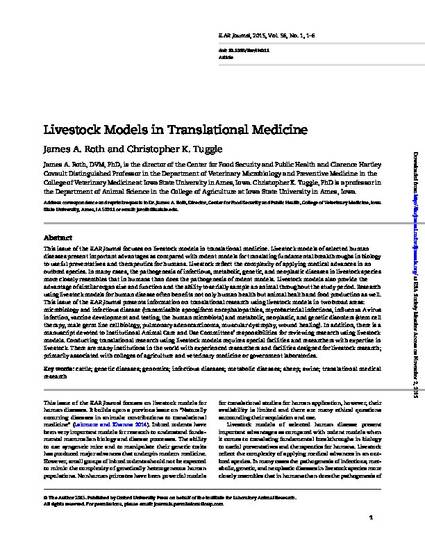
This issue of the ILAR Journal focuses on livestock models in translational medicine. Livestock models of selected human diseases present important advantages as compared with rodent models for translating fundamental breakthroughs in biology to useful preventatives and therapeutics for humans. Livestock reflect the complexity of applying medical advances in an outbred species. In many cases, the pathogenesis of infectious, metabolic, genetic, and neoplastic diseases in livestock species more closely resembles that in humans than does the pathogenesis of rodent models. Livestock models also provide the advantage of similar organ size and function and the ability to serially sample an animal throughout the study period. Research using livestock models for human disease often benefits not only human health but animal health and food production as well. This issue of the ILAR Journal presents information on translational research using livestock models in two broad areas: microbiology and infectious disease (transmissible spongiform encephalopathies, mycobacterial infections, influenza A virus infection, vaccine development and testing, the human microbiota) and metabolic, neoplastic, and genetic disorders (stem cell therapy, male germ line cell biology, pulmonary adenocarcinoma, muscular dystrophy, wound healing). In addition, there is a manuscript devoted to Institutional Animal Care and Use Committees’ responsibilities for reviewing research using livestock models. Conducting translational research using livestock models requires special facilities and researchers with expertise in livestock. There are many institutions in the world with experienced researchers and facilities designed for livestock research; primarily associated with colleges of agriculture and veterinary medicine or government laboratories.
Available at: http://works.bepress.com/james_roth/45/

This article is from ILAR Journal 56 (2015): 1, doi:10.1093/ilar/ilv011. Posted with permission.